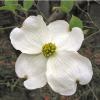Fig Ficus spp
Navigate gallery: (thumbnails represent previous and following two images, if present, surrounding current image)
Feverfew Tanacetum parthenium
Navigate gallery: (thumbnails represent previous and following two images, if present, surrounding current image)
Eucalyptus Eucalyptus spp
Navigate gallery: (thumbnails represent previous and following two images, if present, surrounding current image)
Evening primrose Oenothera biennis
Navigate gallery: (thumbnails represent previous and following two images, if present, surrounding current image)
Elecampane Inula helenium
Navigate gallery: (thumbnails represent previous and following two images, if present, surrounding current image)
Elderberry Sambucus spp
Navigate gallery: (thumbnails represent previous and following two images, if present, surrounding current image)
Echinacea Echinacea spp
Navigate gallery: (thumbnails represent previous and following two images, if present, surrounding current image)
Dogwood Cornus spp
Navigate gallery: (thumbnails represent previous and following two images, if present, surrounding current image)
Dandelion Taraxacum officinale
Navigate gallery: (thumbnails represent previous and following two images, if present, surrounding current image)
Cramp bark Viburnum opulus
Navigate gallery: (thumbnails represent previous and following two images, if present, surrounding current image)
Feedback and participation welcome! Please send bug reports to web@tryonfarm.org
















